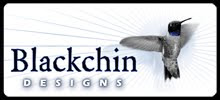
The stockings were hung by the chimney with care. The shoes were another story.
Winter is the time when nature dials back and retrenches: trees are bare, fields lie fallow, and birds and animals quietly gather their strength for the frenzy of spring migration and breeding. And thus it is for humans too: winter is a time of rest and redemption, of reflection and quiet anticipation of new beginnings.
And this is my official excuse for sitting on my bum doing nothing for the greater part of the week.
Christmas was everything I hoped it would be: the rainy weather was a perfect excuse to relax indoors with the family, catch up with a year of gossip, and feast on amazing food—it seems that my family's Christmas spreads just get better every year.
As soon as the rain passed, of course, my mind turned to birding. The Orange County Birding listserv was buzzing as usual with lots of interesting sightings, but for some reason, I didn't feel like chasing too hard. Part of this was low-level burnout after the 15-hour marathon that was the Gainesville Christmas Bird Count (during which I aggravated an already bad cold, pulled a chest muscle from coughing, and infected half the membership of Alachua Audubon), and part of it was just...sloth. I was home, and I didn't feel like wandering.
So my birding outings this week have been boring and predictable-yet, for me, deeply enjoyable. During long walk through Talbert Nature Reserve down to the beach on Sunday, I found about 20 Canvasbacks in the little pond by the Victoria Street bridge. At Huntington Central Park yesterday, I tried and failed to locate the McGillivray's Warbler and Black-throated Gray Warbler by the Gothard Street parking lot. They certainly could have been in there, though—when we arrived, warblers were calling and darting through the trees everywhere. About 90% of them were Yellow-rumpeds, but there were also good numbers of Common Yellowthroats, as well as Orange-crowned, Wilson's, and Townsend's Warblers:

There were so many birds flying around that finding the lone McGillivray's in the crowd would have been like finding the proverbial needle in a haystack. Glenn played its song a few times on his iPod, with no response (at least not from the McGillivray's Warbler—it did manage to seriously piss off a Hermit Thrush, who jumped up and glared as us for about a minute before taking off again).
A few minutes later, we ran into another birder who told us he had just seen a Yellow-throated Vireo. So of course, we followed him back to the spot where he had seen it, and found—after about half an hour of looking—that it had taken off. But we still had fun watching a huge flock of Cedar Waxwings plucking berries from the trees and fighting for perching space.
At Bolsa Chica yesterday afternoon, we didn't see anything we hadn't seen before. But after coming back from north-central Florida, where birders can usually expect to see at most two or three duck species at a time, and usually at spotting-scope-only distance, it was fun being on the Bolsa Chica footbridge again—Lesser Scaups, Ruddy Ducks, Cinnamon Teals, Northern Shovelers, Mallards, Northern Pintails, Buffleheads, and Surf Scoters were all bobbing around only a few yards away. I realize now how lucky I am to have learned to bird out here!
We stayed at Bolsa Chica until it was dark, so Glenn could get some sunset shots. I love watching the birds fly in for the night.

For the past few years, this was always how we ended our weekends: watching the Sunday evening sunset at Bolsa Chica before heading home to gear up for the week ahead. But the great thing about being on vacation is that I still have a few more weekend days to go!






















































